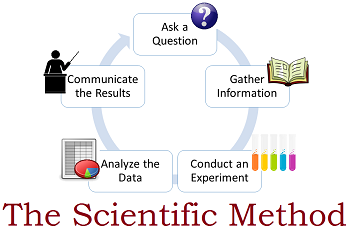Get Help
Need more help? Ask Us!
- emailEmail: Get answers within 24 hours
- location_cityVisit: Come to any of our locations
- peopleMeet: Make an appointment with a librarian
- smartphoneText: Send your questions to 617-431-2427
How Does Scientific Information Become Common Knowledge?
Scientific information evolves through a continuous process of communication among scientists. It develops in cycles moving from ideas, through research that tests the ideas, to publications reporting the results, first in the primary literature and later in the secondary and, if significant enough, in the tertiary literature. New ideas, inspired by what has gone on before, are the start of new cycles. The following chart describes an idealized picture of this process.

Year 1
- IDEA
- Formation of a hypothesis.
- RESEARCH
- Search of the literature to see what has been done before and testing of the hypothesis in the lab or field.
Years 1-3
- INVISIBLE COLLEGE
- Informal discussion of research with colleagues via email, discussion lists, at meetings, seminars, etc.
- GREY LITERATURE
- More formal record of research published as preprint or technical report, a personal website, or given as a paper at conference for which proceedings not published. (This type of publication is part of the primary literature, since it is an original record of research, but is called "grey" by librarians because harder to locate than the readily available primary literature below.)
- PRIMARY LITERATURE
- Detailed record of research formally published as an article in a journal or a paper in the published proceedings of a conference. Some of these are brief reports of research in progress (sometimes called "communications"or "letters"), with whole journals or a section of a journal devoted to this format. Unlike these brief reports and papers delivered at conferences, the longer research articles in scholarly journals are peer-reviewed prior to publication lending them the most authority. The primary literature is readily available through the secondary literature below.
Years 3-5
- SECONDARY LITERATURE
- Publications summarizing and pointing to the primary literature soon after it appears. Their main purpose is to facilitate timely access to scientific information. Most significant in this category are indexing & abstracting services (also called electronic indexes or article databases), in which you can search across journals to find articles of interest. Also in this category are review articles published in journals or appearing in annual volumes devoted exclusively to reviews. A review is a digest of recent research in a particular subject area and, if available for your topic, an invaluable resource for background information.
Years 5-10
- TERTIARY LITERATURE
- Publications that also summarize and point to the primary literature, but generally only after it has become widely accepted and believed, such as handbooks, encyclopedias, textbooks, and popular literature-- all good sources for background information.
